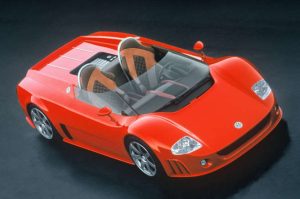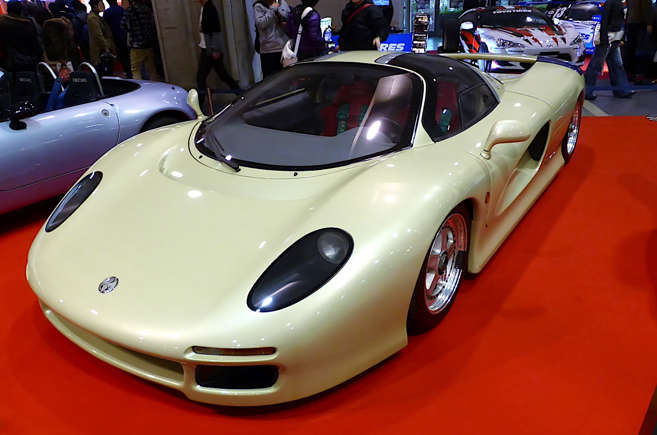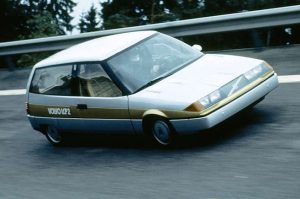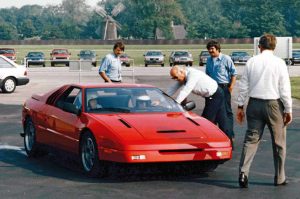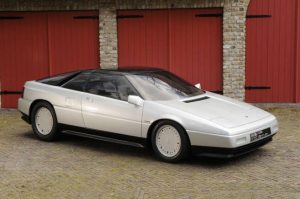10 concepts that nearly made production
Plenty of concept cars come, create a motor show stir, then disappear – while others get a little closer to the production line.
Here’s our selection of modern-classic-era concepts that got nearer than many, some even finding their way onto roads and circuits in the hands of some lucky journalists.
Organised in chronological order, these are 24 of the most exciting, innovative and avant-garde modern classics we wish we’d had a chance to sample from the driver’s seat.
The Bulldog emerged from a desire to showcase Newport Pagnell’s ability to make a supercar – as if Aston Martin needed to prove anything.
By the dawn of the 1980s the firm was, however, striving to move in a bold new direction. Fresh from penning the controversial Lagonda, William Towns went all wedgy again – not that the Bulldog’s acute angles hurt its performance…
It certainly looked striking, yet its double-ton top speed was even more remarkable. The promise from its modified twin-turbo 650bhp DBS V8 motor was an astonishing 237mph – in reality, it ‘only’ managed 192mph during testing at MIRA. Recently restored, the effort to crack 200mph is now on once again.
Not so much a concept that almost made it, but one that managed to accurately predict motoring trends nearly two decades into the future.
The Volvo LCP2000 was a Swedish engineering showcase that attempted to foretell what a car of the year 2000 would be like – back in 1983.
Extensive use of plastics, magnesium, aluminium and even carbonfibre door frames kept the weight low, which was just as well, because the powerplant displaced a mere 1.3 litres from its three cylinders.
Still, its 70+mpg was virtually unheard of, while its styling would go on to provide inspiration for the 480.
Ford had another pop at Ferrari in the mid-1980s with a fully realised, Italdesign-penned, mid-engine sports car.
The idea was to steal sales away from the Prancing Horse in the notoriously conservative home market. Patriotic American buyers would surely choose the Ford over its Italian rival? Well, no, because they weren’t given the chance.
The Maya was eventually canned, but only after two years of development and three prototype generations – all of which were fully functioning with the latter even trimmed with bespoke interiors.
The top-performing Maya II EM had a twin-turbo V6 that made a very healthy 300bhp.
Yet another Italdesign creation from the same year that never made it to the showroom was the Lotus Etna. Built on an extended Esprit chassis, Etna was to be a true supercar.
All of Lotus’ F1 innovations were to be thrown at it, including traction control, active suspension and even noise cancelling.
The latter probably wouldn’t have been welcomed, as Etna was to be powered by Tony Rudd’s Type 909 V8 engine – basically two Lotus twin-cams bolted together and tuned to more than 330bhp.
Although the car never made it past the full-size mock up, it has since been completed and is now road legal.
Before the NSX wowed the world in ’89 – showing that Japan could make world-beating supercars – Nissan toyed with the same idea.
The Mid-4 and Mid-4 II were both fully functional and driving mid-engine supercars, with some eye-watering tech, much of it going into future halo Nissans you might have heard of… GT-R and 300ZX anyone?
The VG30DETT engine was pioneered in these concepts, along with the HICAS four-wheel steering and ATTESA all-wheel-drive systems. Suspension was via double-wishbone up front and multi-link at the rear. Sounds like it would have been a winner.
Porsche’s late-1980s finances were perilous, to put it mildly.
Yet in this climate, behind the scenes at Weissach, engineers had been building a V8-powered super saloon that could take on the very best that BMW and Mercedes-Benz could throw at it.
They had just built a competitor’s after all, in the form of the Mercedes-Benz 500E.
Sadly, the early 1990s saw a global recession that pushed Porsche’s finances into the red and, subsequently, the front-engine, rear-wheel-drive four-door was shelved.
Its styling would go on to influence the 993 and 996 911s, and the project also informed its spiritual successor, the Panamera.
Billed as offering ‘F1 on the road’ the Caspita (Italian for ‘good heavens’) was the brainchild of lingerie magnate Yoshikata Tsukamoto and the president of Dome Motors, Minoru Hayashi.
Dome had form in the supercar world, because it had previously developed the Dome Zero, but sadly that also never got past the driving prototype stage.
The Caspita’s F1 marketing claim wasn’t just hyperbole, it was initially powered by Subaru F1’s abortive 1235 flat-12 engine, with power switching later to a Judd GV V10.
The latter gave the MkII Caspita a top speed of 199mph and 60mph in just 3.4 secs – that’s, hypothetically, McLaren F1 quick.
It seems that 1991 was a big year for most manufacturers to parade weird and wonderful concepts.
Audi had not one but two doing the rounds of international motor shows that year. The less ambitious of the two was the quattro Spyder (QS) – a rather misleading name for a Targa sports car.
Essentially the QS was an Audi R8, 15 years before we got the R8. It was mid-engined and made from aluminium – just like its successor – but, unlike the R8, it had to make do with a 2.8-litre 172bhp V6.
Apparently, Audi dealers had thousands of pre-orders, too, oh well.
Ever since the introduction of its game-changing M1, BMW made its supercar intentions clear. Fresh from a financially buoyant 1980s, the Munich firm had big plans, part of which involved a new-for-the-1990s, 12-cylinder-powered, mid-engined supercar.
The BMW Nazca M12 was the first automotive design to emerge from Fabrizio Giugiaro, son of legendary pen-smith Giorgetto.
It wasn’t simply jaw-dropping to behold, it backed up its looks with 300bhp, courtesy of the firm’s 5.0-litre M70 engine. Two further prototypes emerged, including the open-top C2 Spider in 1993 but, sadly, that was the M12’s swansong.
10. Daihatsu X021 (1991)
This is probably the most painful ‘what might have been’ here. With Mazda’s MX-5 taking the world by storm, Daihatsu – incidentally Japan’s oldest car company – decided to show off its rival at the ’91 Frankfurt motor show.
Now, this is tantamount to heresy in some corners of the internet, but word is that the X021 drives a lot better than Mazda’s best-selling roadster. With a featherweight alloy spaceframe chassis, glassfibre panels and a 140bhp twin-cam 1.6-litre engine, we can believe it, too.
Road & Track magazine journalists even got invited to have a go at Daihatsu’s test track and rated it very highly indeed.
